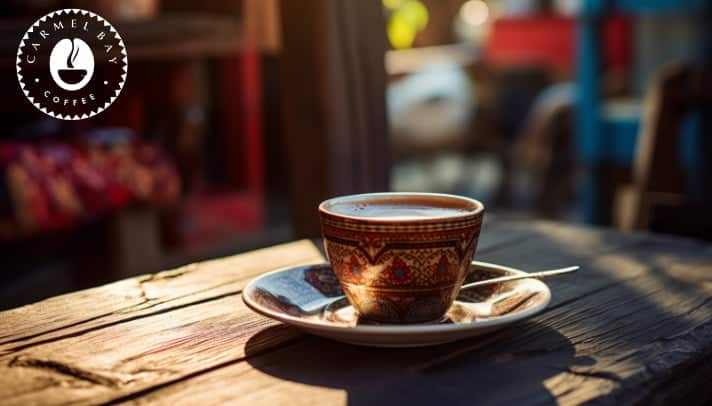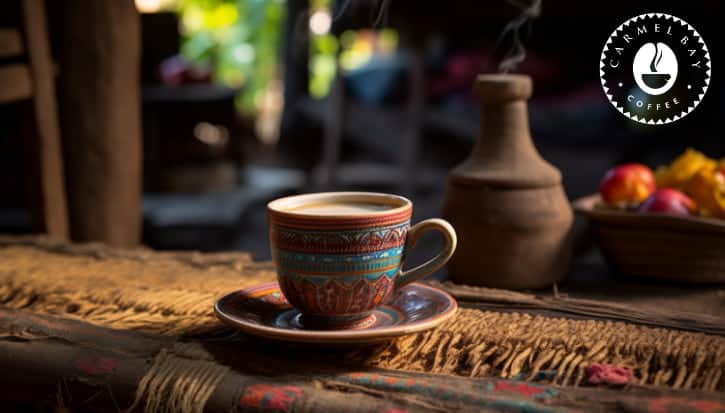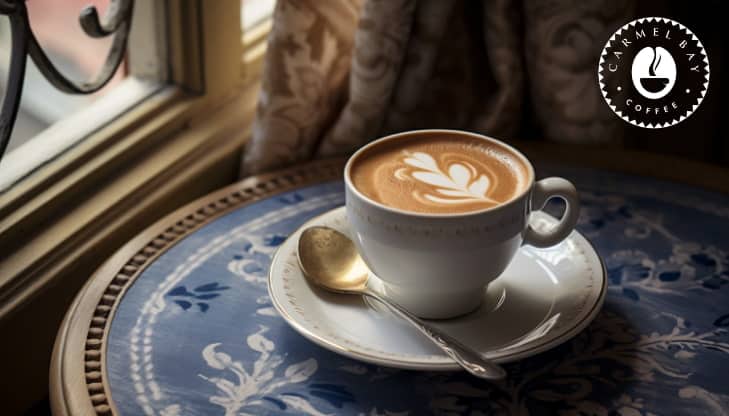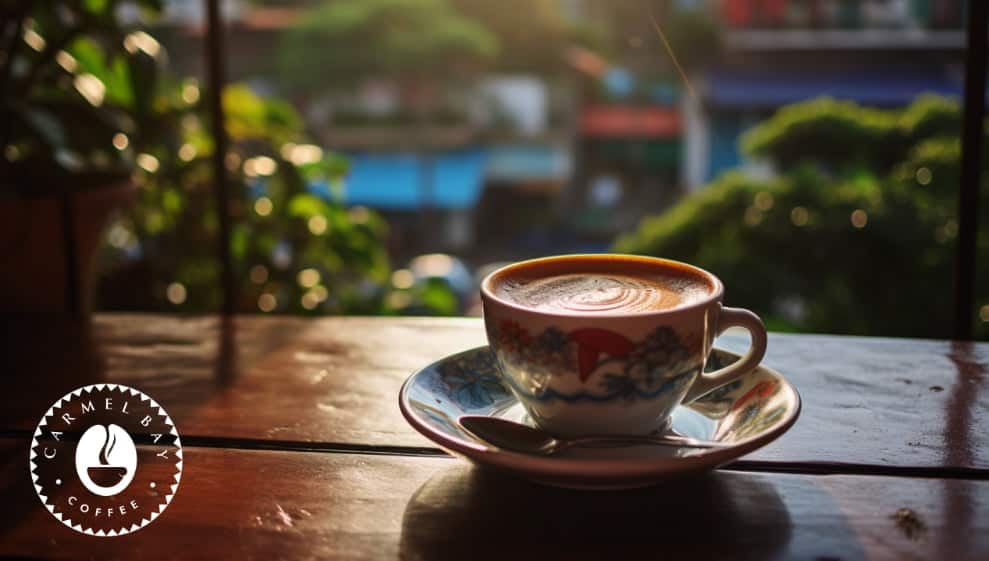You know, coffee isn’t just a beverage—it’s a global love affair. Every region has its unique spin on this caffeinated masterpiece. Let’s embark on a journey exploring the fascinating world of coffee, shall we?
The Art of Coffee Across Cultures
The cup that cheers, as it’s often called, holds within its embrace a rich tapestry of global customs, traditions, and flavors. The art of coffee-making and its consumption is akin to an artist painting on canvas; while the base remains the same, each brushstroke represents a distinct culture, a unique way of life.
Coffee: More than just a drink
For most of us, hot coffee is an essential start to the day. But it’s more than just a jolt of caffeine; it’s a moment of reflection, a cherished routine. In the bustling streets of New York, it’s the to-go cup as people rush to catch their trains. In the serene backdrop of Kyoto, it’s the meticulous process of drip brewing, allowing one to find mindfulness in every drop.
Across the Mediterranean, coffee shops known as “kafenia” in Greece or “caffè” in Italy serve as community hubs. Here, elderly folks often debate on politics, youngsters discuss the latest in music, and writers find solace, all over endless cups of coffee.
It’s fascinating to think that a bean, which is processed, roasted, ground, and transformed into brewed coffee, can be so central to our daily lives. From the highlands of Ethiopia to the vast plantations of Brazil, this bean travels the world, morphing into various avatars, each telling a story, each holding a piece of history.
Ingredients That Make Coffee Unique
The core of coffee, its soul, might be universal, but its character? That’s where the global dance of flavors comes into play.
In the Middle East, cardamom is often infused into the brew, giving the coffee a spicy kick. Venture a bit south to North Africa, and you might find your coffee adorned with a sprinkle of nutmeg or clove.
The Vietnamese, on the other hand, introduced the world to a creamy, sweet delight by masterfully combining robust coffee with sweetened condensed milk. And if you’re ever in Mexico, don’t be surprised if your coffee comes with a hint of cinnamon or even chocolate.
Then there’s The Italian espresso, short and strong, crafted by a skilled barista, requiring nothing but the finest roast. Contrast that with the American preference for milkier concoctions like lattes and cappuccinos, often flavored with syrups ranging from vanilla to caramel.
These ingredients are more than just flavor enhancers. They’re a glimpse into the region’s palate, their culinary history, and their adaptation of the world’s most beloved beverage. It’s a testament to how diverse we are as a species, yet bound together by shared tastes and traditions.
Coffee Recipes from Around the World
Turkish Coffee
In the bustling bazaars of Istanbul, amidst the scent of spices and the chatter of vendors, lies the rich tradition of Turkish coffee.
Unlike other brewing methods, Turkish coffee retains the grounds in the cup, making the beverage thick and intense.
Typically served in small, ornate cups, this coffee not only offers a caffeine kick but also a bite of the exotic, especially when paired with the chewy sweetness of Turkish delight. Beyond just a beverage, the residue left behind in a cup often becomes a canvas for telling one’s fortune, a practice deeply embedded in the local culture.
As we immerse ourselves in the rich traditions of coffee, one preparation stands out for its deep roots and distinct flavor. Let’s journey to the heart of Turkey as we explore the time-honored Turkish coffee recipe.
Italian Espresso
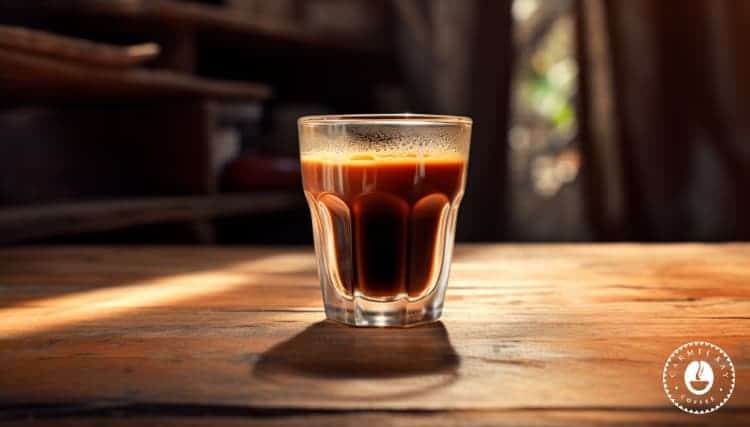
The heart of Italian piazzas and alleyways is the unmistakable aroma of freshly brewed espresso, a signature of Italian coffee culture. It’s not just a drink; it’s a lifestyle.
The espresso bars in Rome or Milan often see locals huddled, sipping their shots, debating passionately, or simply soaking in the morning sun. This concentrated brew, dark and potent, is often seen as a reflection of Italy’s fervor and zest for life.
Vietnamese Iced Coffee
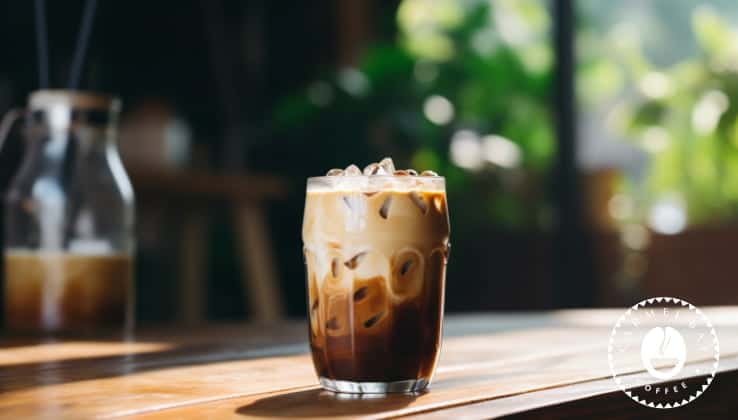
Beyond the pho and banh mi, Vietnam’s streets have another treasure – their iconic iced coffee. Drizzled over the dense sweetness of condensed milk, this coffee offers a symphony of flavors – bitter from the brew, creamy, and sweet from the milk.
As the ice cubes clink in the heat, this beverage serves as a refreshing retreat from Vietnam’s tropical warmth.
If you’ve developed a taste for unique coffee variations and are eager to try your hand at another classic, be sure to explore my detailed guide on ‘How to make Vietnamese Iced Coffee.’
Americano
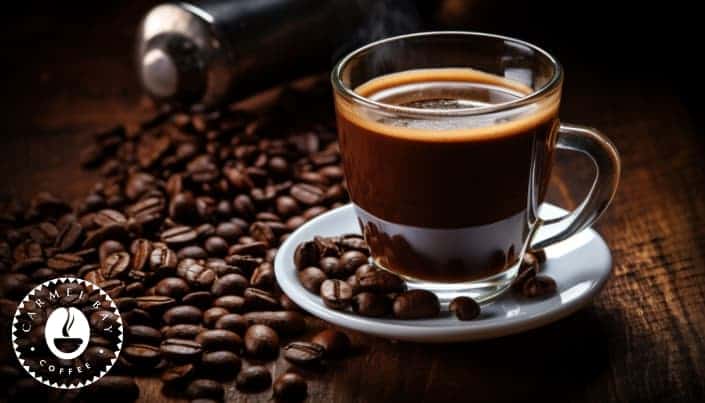
Born from the necessity of American soldiers stationed in Italy during WWII, the Americano is a testament to adaptability. The soldiers found the local espresso too strong, so they diluted it, unknowingly giving birth to a new coffee variant. Today, with its easy-going nature, the Americano is enjoyed worldwide, embodying the spirit of blending cultures.
While we’re on the topic of exquisite coffee variations, if you’re interested in mastering another classic, don’t miss out on my detailed ‘Americano recipe‘ article. Dive in to learn how to perfect this smooth and aromatic espresso-based delight.
Mexican Café de Olla
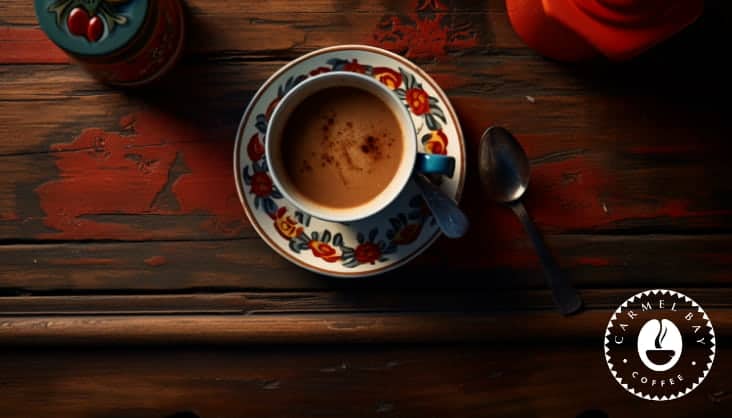
The rustic charm of Mexico is beautifully captured in its traditional Café de Olla. Brewed in earthen pots, this coffee whispers tales of ancient civilizations with every sip. Infused with cinnamon and sweetened with piloncillo (a type of unrefined cane sugar), it’s like embracing Mexico’s rich heritage in a cup.
There’s one particular brew that captures the essence of traditional Mexican flavors beautifully. For those eager to recreate this aromatic and spiced delight at home, be sure to delve into my ‘Mexican Café de Olla coffee recipe.’
Spanish Café con Leche
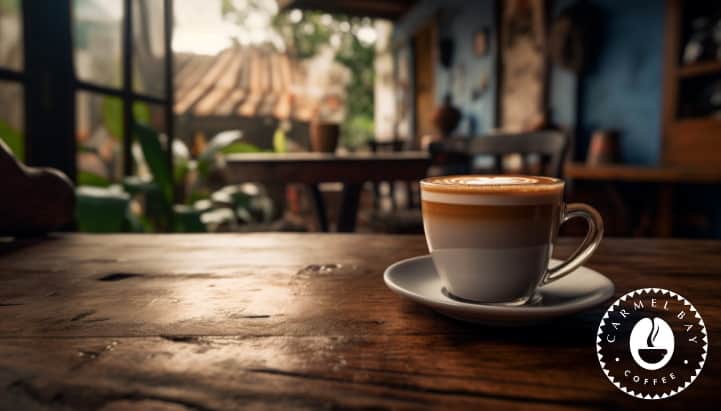
From the flamenco dancers of Andalusia to the bustling streets of Barcelona, the spirit of Spain is echoed in its Café con Leche. A harmonious blend of robust coffee and frothy milk, it’s Spain’s answer to the world’s milky coffees. Whether it’s breakfast or an afternoon treat, this coffee remains an inseparable part of Spanish life.
For those intrigued by this harmonious blend of espresso and milk, be sure to check out my ‘Spanish Café con Leche coffee recipe‘ for an authentic taste experience.
Swedish Fika
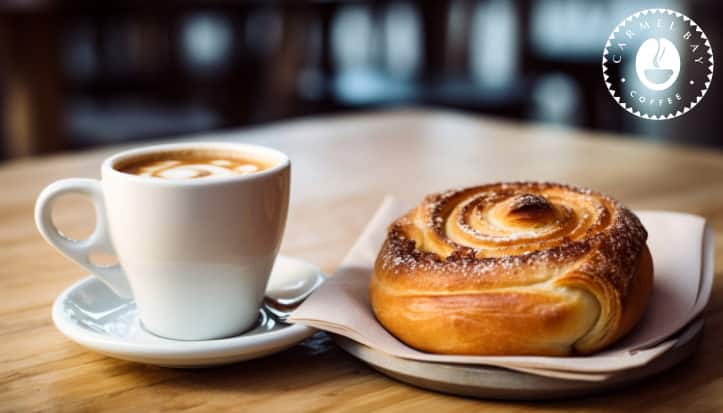
In the land of Vikings and Northern Lights, Fika is more than a coffee break. It’s a ritual, an invitation to pause and connect. Surrounded by the scent of freshly baked cinnamon rolls, Fika is less about the coffee and more about cherishing moments, with oneself or with loved ones.
This isn’t a coffee recipe; it’s a reminder to enjoy spending time with family and friends!
As we explore global coffee traditions, there’s one practice from Sweden that transcends the mere act of sipping a brew. It’s a ritual that embodies relaxation, connection, and the joy of simple pleasures. Dive deeper into this cultural phenomenon in my article, ‘Swedish Fika: More Than Just a Coffee Break.’
Ethiopian Buna
In the verdant highlands of Ethiopia, where wild coffee trees still bloom, Buna is not just a beverage; it’s a celebration. With every sip, you’re partaking in a tradition that spans centuries, one that involves meticulous roasting, grinding, and brewing. The communal nature of Buna is a testament to Ethiopia’s emphasis on community and togetherness.
It’s impossible to overlook the very cradle of coffee itself – Ethiopia. For those keen on experiencing this age-old brew in its most authentic form, delve into my ‘Ethiopian Buna coffee recipe.’
Australian Flat White
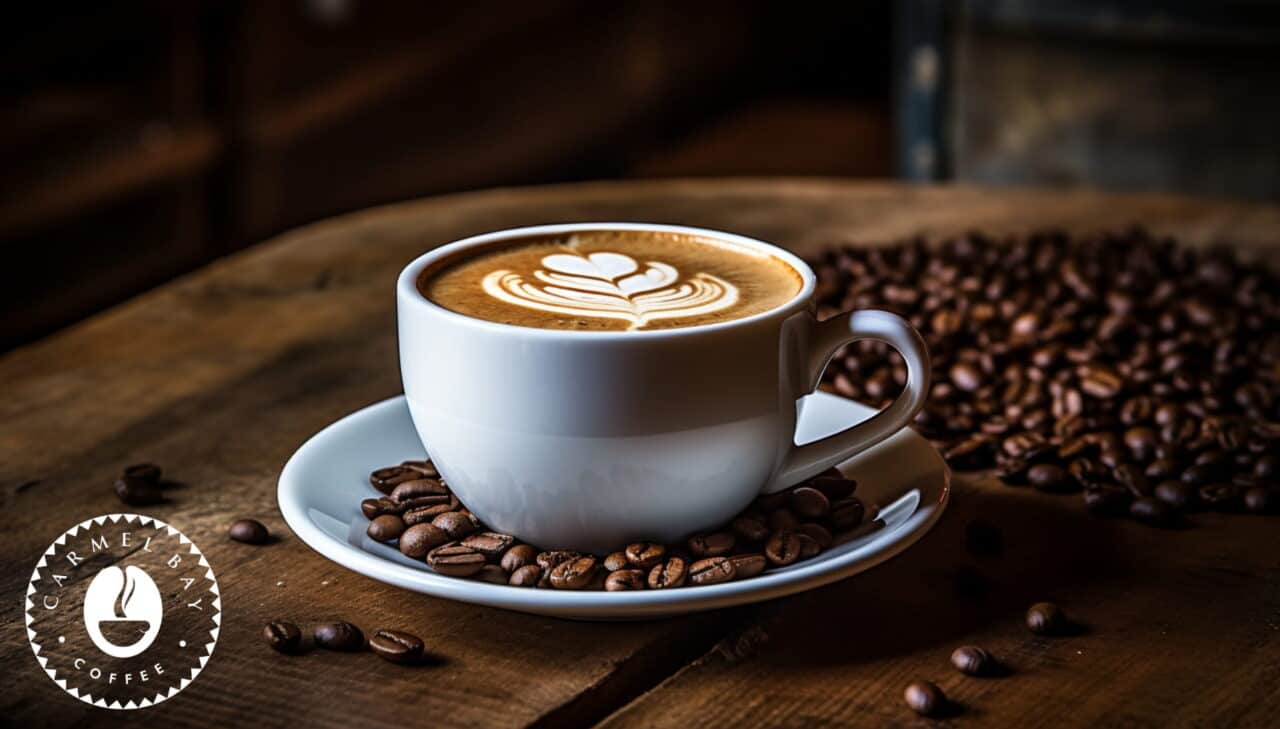
Australia, known for its kangaroos and coral reefs, offers another gem – the Flat White. This coffee, with its silky texture and perfect balance, reflects Australia’s modern and innovative spirit. Whether you’re in Sydney’s bustling coffee shops or Perth’s laid-back cafes, the Flat White remains a favorite.
If you’re intrigued by the world of coffee and want to try your hand at a classic down-under favorite, be sure to check out my detailed guide on the ‘Australian Flat White recipe.’ It’s a smooth and creamy delight that will elevate your coffee game.
French Café au Lait
Beneath the shadow of the Eiffel Tower, in the quaint cafés lining Parisian boulevards, the Café au Lait symbolizes French elegance. Paired with a buttery croissant, this milky coffee becomes a sublime experience, echoing the romantic allure of France.
While various global coffee recipes captivate our senses, there’s one that stands out for its comforting simplicity and cultural significance. To truly immerse yourself in the art of French coffee-making, delve into our detailed exploration on ‘French Café au Lait: A Morning Ritual’.
Brazilian Cafezinho
Brazil, the world’s largest coffee producer, offers the world ‘Cafezinho’ – a small, strong coffee, often sweetened and served several times a day. Much like Brazil’s vibrant carnivals and sambas, Cafezinho is an explosion of flavors and energy in a tiny cup.
While we’ve scratched the surface of Brazil’s treasured Cafezinho in our exploration of its cultural resonance, mastering its preparation is an art form in itself. Ready to immerse yourself in the intricacies of brewing this iconic beverage? Delve deeper into ‘The Art of Brewing the Brazilian Cafezinho’ and uncover the secrets to perfecting Brazil’s cherished coffee ritual.
Indian Filter Coffee
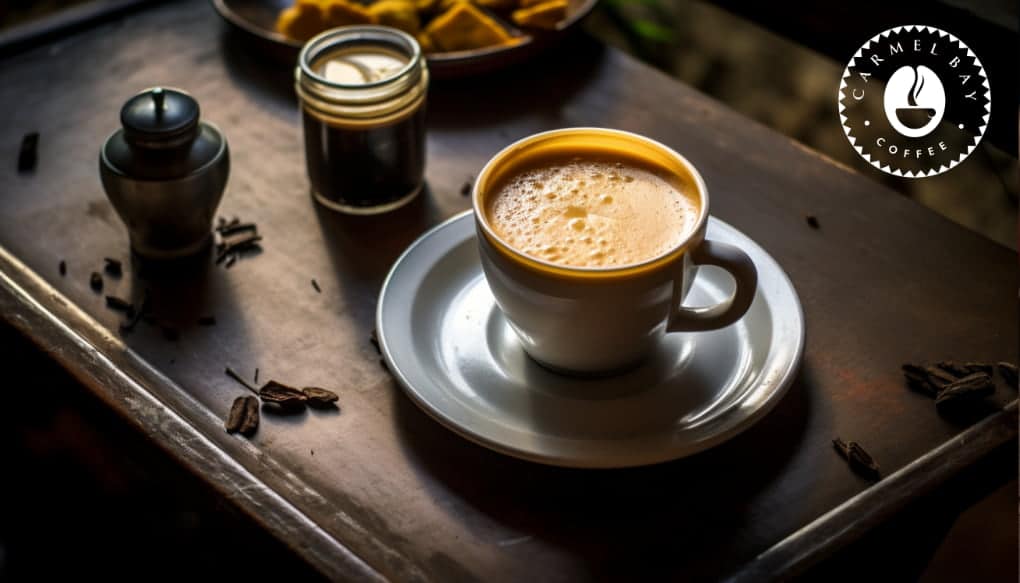
Traveling to the southern realms of India, one is greeted with the distinct aroma of filter coffee. Brewed using a traditional metal filter, this coffee is a delicate balance between strong decoction and frothy, boiled milk. Served in stainless steel tumblers and Deborah (a wide metal saucer), this coffee is often enjoyed with a side of crispy dosas or fluffy idlis, making it an integral part of South Indian culinary tradition.
Want a deeper dive into this aromatic brew? Explore our detailed article and recipe on ‘Indian Filter Coffee: The Timeless Recipe and Its Captivating Charm’ for the full story behind each cup.
For a visual journey through global coffee variations, check out our ‘Exploring the World of Coffee Drinks: Illustrated Guide’.
FAQs Coffee Recipes from Around the World
What is the key ingredient in Vietnamese Iced Coffee?
One of the standout features of Vietnamese Iced Coffee is its creaminess, which is attributed to the use of sweetened condensed milk. Unlike regular milk or cream, sweetened condensed milk brings a rich and dense sweetness to the coffee, transforming it into a dessert-like beverage. This ingredient, initially introduced due to a scarcity of fresh milk in Vietnam, soon became the defining feature of the country’s iconic coffee.
How is Turkish coffee different from Espresso?
Turkish coffee and espresso are distinct not only in preparation but also in flavor and presentation. While both are strong coffees, the preparation methods vary greatly.
Turkish coffee utilizes very finely ground coffee beans which are simmered in water, often with sugar, resulting in a thick and aromatic brew. The grounds settle at the bottom, often leaving a sludgy residue. On the other hand, espresso is made by forcing hot water through finely-ground coffee under high pressure. This method extracts the flavors in a concentrated manner, resulting in a bold, pure shot of coffee without sediment.
What’s the significance of Fika in Sweden?
Fika, which literally translates to “coffee break,” is more than just a pause for caffeine in Sweden.
It’s an ingrained cultural tradition. More than the coffee itself, it’s the act of taking a break, slowing down, and appreciating the simple joys of life. Whether in a bustling city office or a countryside cottage, Swedes prioritize this moment of respite.
It’s not only about enjoying a cup of coffee but also about bonding with friends, family, or colleagues, often over pastries, especially the beloved cinnamon rolls. Fika represents the Swedish ethos of balanced living and the importance of maintaining personal connections in the daily hustle.
Which country is considered the birthplace of coffee?
Ethiopia holds the esteemed title of being the birthplace of coffee. According to popular legends, it was in the Ethiopian highlands that coffee beans were first discovered and consumed.
The story goes that a goat herder named Kaldi observed his goats becoming unusually energetic after eating berries from a particular plant. This plant was the coffee plant, and its beans, when brewed, produced the invigorating drink that we know today.
Over time, the fame of this energizing brew spread from Ethiopia to the Arabian Peninsula and then to the rest of the world.
Is a Flat White stronger than a latte?
In terms of coffee concentration, a Flat White is typically stronger than a latte. While both drinks use espresso as the base, the key difference lies in the milk-to-coffee ratio.
A Flat White is made with a double shot of espresso and microfoam, resulting in a creamy yet strong coffee flavor. In contrast, a latte has a larger volume of steamed milk, which dilutes the coffee’s intensity. The result is that while a latte is milkier and milder, a Flat White offers a more robust coffee taste.
Wrapping Up Coffee Recipes from Around the World
From the lanes of Istanbul to the cafés of Paris, coffee drinks are universal yet distinct. It binds us, yet tells tales of our unique cultures and traditions, much like how different ingredients are blended together. In a cup of coffee, we find the world. Isn’t it time you explored these recipes in your kitchen?

